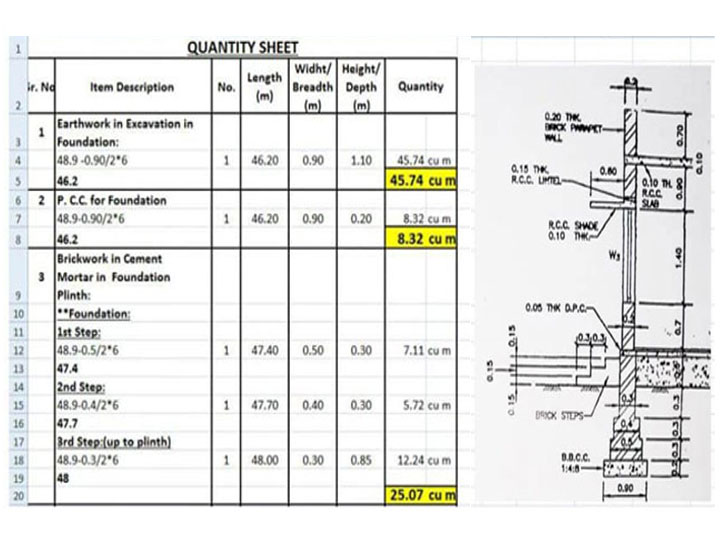Quantity estimation is the process of finding out how many materials you need to build a structure, and how much will it cost you. Estimating the quantity of materials about a building project gives you a precise idea about how expensive the project is going to be and how much time will it take, which in turn lets you know if the project is feasible or not. Today, we will talk about the center line method of material quantity estimation.
The center line method is quite popular with small-scale builders because it is easy, quick and quite accurate. The only downside to this method is that it is only applicable for load-bearing buildings (where there are no columns or similar structural members). Hence it is mostly applied to only load-bearing walls, or partially in case of rooms with no columns.
Using this method and some formula, you can quickly find out the number of bricks and the amount of mortar and plaster required for the applicable room.
The center line method of materials quantity estimation is one of the simplest of them available, and so it is very popular as well. If there are columns or other similar structures in the room, then this method cannot be used, but otherwise it’s a very good quantity estimation method.
The centerline method works on the principle that given all walls (long or short sides) have the same cross section and the same type of footing, the total volume of the wall will be the total length of the center line of all the walls in the room, multiplied by the cross section of the wall (height and breadth).
Hence, in this method the total center line length of the walls is measured out, with special care at the corners and junctions. When you have the total length of the walls, that is the center line length, you multiply it by the width and breadth of the wall – and that is the entire wall quantity. Now you can find out the materials estimate by using expected formulas or charts.
We have,
Total center line length
= 2 x (Length of long wall + Length of short wall) + 3 x (Length of partition wall)
So, Total center line length
= 2 x (5.3 + 5.3) + 3 x 4.3
= 34.1 m.
Earthwork in excavation
= Total center line length x Breadth x Depth
= 34.1 x 0.9 x (3 x 0.3)
= 34.1 x 0.9 x 0.9
= 27.621 m3.
Concrete in foundation
= Total center line length x Breadth x Depth.
= 34.1 x 0.9 x 0.3
= 9.207 m3.
Brickwork in foundation for first footing
= Total center line length x Breadth x Depth
= 34.1 x 0.6 x 0.3
= 6.138 m3.
Brickwork in foundation for second footing
= Total center line length x Breadth x Depth
= 34.1 x 0.5 x 0.3
= 5.115 m3.
Brickwork in plinth
= Total center line length x Breadth x Depth
= 34.1 x 0.3 x 0.6
= 6.138 m3.
Brickwork in superstructure
= Total center line length x Breadth x Depth
= 34.1 x 0.3 x 3.5
= 35.805 m3.
